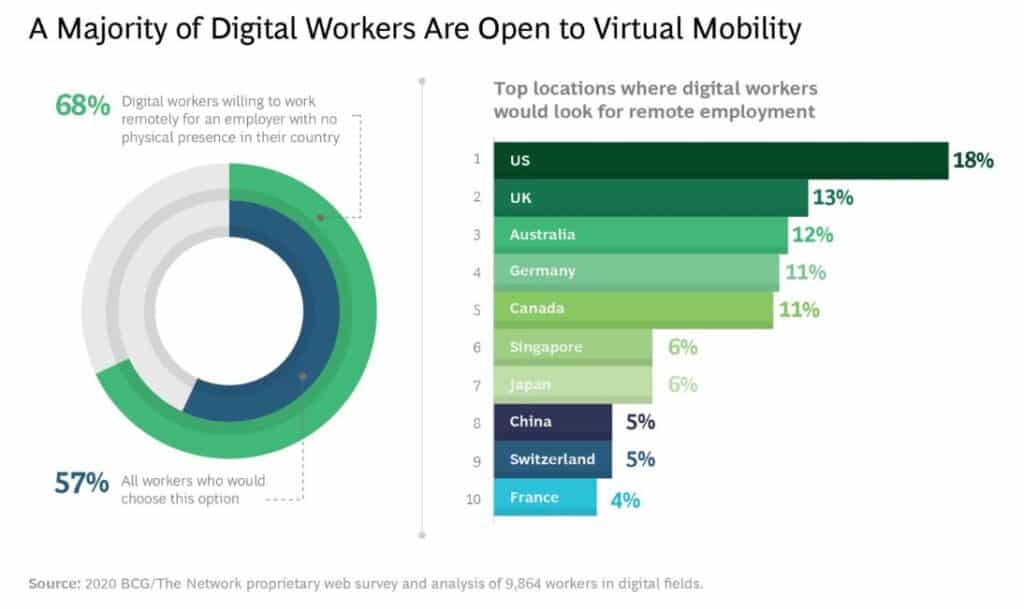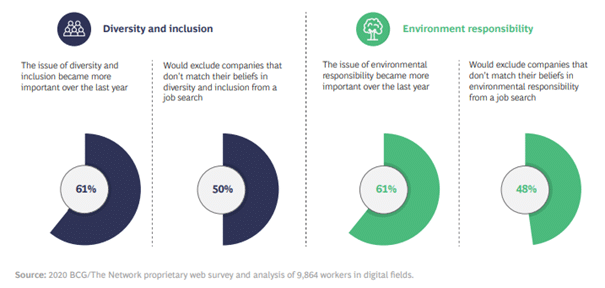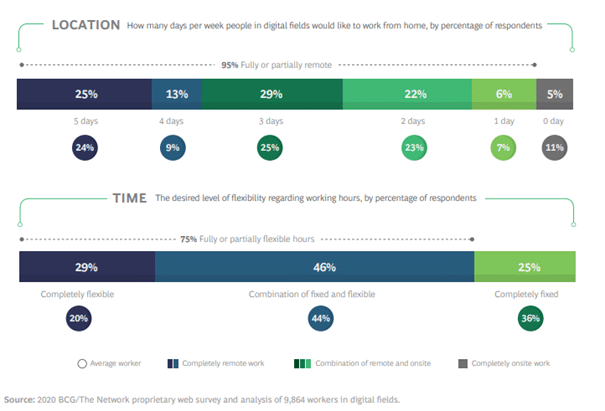Life as a CTO must be hard. Not only there is pressure to deliver an extensive roadmap as soon as possible within budget, but it is also a hell of a job to get the right talent onboard and to keep them. And then, your CEO told you last month to speed up development as an important project was won and 2 months later to slow down as the next capital round is at risk. Are you sweating already? The struggle has just begun!
Let’s imagine 2030. When we write this article, there is an important wave of layoffs in technology with more than 58,000 layoffs in US-based tech firms only in January 2023. However, let’s not confuse ourselves: this is a small hick-up in the ever-increasing demand for digital talent. Based on full connectivity in 2030 (including predicted 100% real-time satellite coverage in all spots on the globe) and the steep increase in cheap computational power (AI will be available not only in the cloud but also at the edge in every single device), the development roadmap seems endless.
Whereas companies are committed to contributing to this global technology revolution, it is the contributions of the individual digital workers that will define your role in it. Looking 7 years ahead let us project 3 hypotheses of how your software development team could look like. Let us explore the pros and cons of development team outsourcing disadvantages and advantages, to fully understand the implications it has on the software development team.
1 / Your workforce will be GLOBAL, not local
Did you know that 73% of all digital workers will leave their current job within 3 years? Could you imagine replacing all your employees every 3-4 years? Your tech recruiters will end up exhausted. In 2030, the world will have adapted. You will be fishing in a different pond, a global one. Indeed, in the aftermath of the Corona epidemic, working remotely has become the standard across the globe for the digital workforce. Education has become global, with access to top university programs for everyone. Combined with global connectivity there is no reason anymore not to hire your next team member in Burundi, Athens or Tbilisi. Exhibit 1 (source: Boston Consulting Group) shows how current digital workers prefer to work today, imagine how that will look in 7 years.

If the idea scares you to onboard people across the globe, look at the advantages this brings as well: suddenly there is a worldwide market for talent: much bigger, much more competitive, hence at more attractive rates. We all stand for diversity, don’t we? This is the moment to make it happen. For those who still doubt: One statistic that brings the message home: up to 40 per cent of GDP growth in the US economy between 1960 and 2010 can be attributed to an uptick in the participation of women and people of color in the labor force through improved talent allocation. Imagine opening a worldwide market.
We hear you think it will be difficult to hire globally. Not exactly. The range of services will only increase versus today: IT service providers will continue to offer outsourcing solutions readily available whereas, for those who want to oversee the recruitment part as well, options such as remote.com will only become commodities. The advantages of outsourcing will make many the natural choice.
2 / Purpose above company culture
How about that fantastic company culture, we have been building for years? Well, that’s largely gone. “Purpose” will bring teams together, for a small period perhaps as increasingly individuals will prefer to hop on / hop off interesting topics they encounter. Flexibility above all. Contribution to well-being and purpose will be the enabler, not the branding of an individual company working on it. You’ll assemble teams, mainly temporarily, to contribute to your roadmap, enabling the right people with the right competences at the right time. The digital staff will be somewhat individualistic, mainly concerned about the company “ME”. The digital worker will define where he will work, how much, and on which topic. Access to work will be easy, as well as shifting jobs. Location and working time will be defined by themselves.

Although this might sound too individualistic, the future digital worker is extremely engaged, with climate, purpose and leaving a better world for their children. Exhibit 2 shows the importance already today.
3 / The best employee experience is a virtual one
Not meeting colleagues in real life will not make the next-gen workforce lonely. On the contrary, given his flexibility to work from anywhere, we will find our colleagues where their friends and family are. Or experience a couple of days (even years) in a vibrant city like New York or Barcelona. Work-life balance will improve. Nobody will expect the employer to bring fun to their lives any more. Exhibit 3 shows how the digital workforce prefers to work today – predicting a further increase in flexibility and solutions.

So, won’t they miss the (physical) interaction with colleagues and the obligatory coffee machine talks? To a certain extent that is true, but friendship will not so much be built at work anymore. We expect companies to assemble teams 1-3 times per year, making it great events at iconic locations, with unforgettable parties for some team spirit…Not so bad after all.
Contact us on how you could build your teams for the future, accessing global talent.








